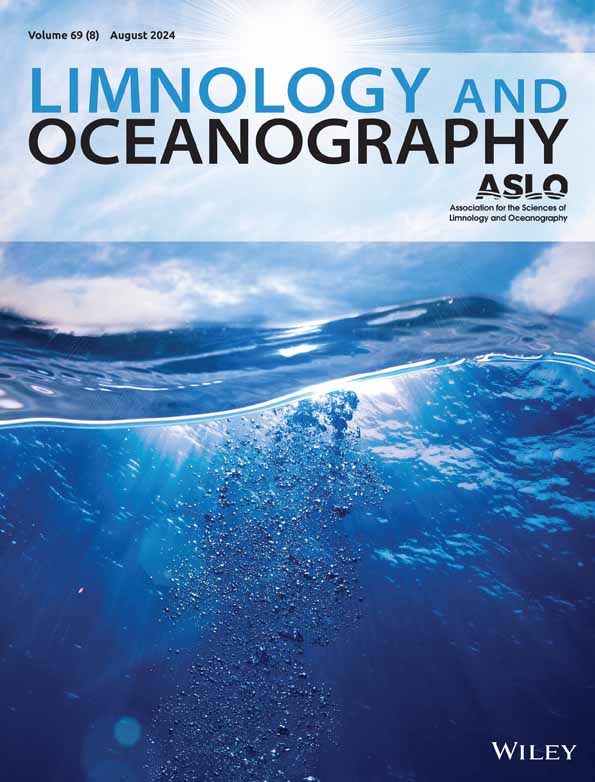Diagnosing coastal processes using machine learning and ocean buoyancy gliders
IF 3.8
1区 地球科学
Q1 LIMNOLOGY
引用次数: 0
Abstract
Ocean buoyancy gliders provide a comprehensive view of the water column, offering more than simply a snapshot of a single moment in time or space. In this study, we applied the established machine learning method, k‐means clustering, to a glider dataset collected in the summer of 2015 in the northern Gulf of Mexico. Clustering analysis of chromophoric dissolved organic matter and salinity revealed the physical structure of water masses, both vertically within the water column and horizontally along the shelf. Supplementary statistical analyses, including principal component analysis and ANOVA, of individual clusters confirmed the clusters were statistically distinct from one another and provided insights into the factors contributing to their differentiation. The clusters identified in the glider dataset represent water masses variously distinguished by river plumes, wind‐induced upwelling effects, shifts in currents, density‐induced stratification, and biological processes. This study demonstrates that applying machine learning clustering methods to subsurface glider data is a novel technique that enhances the analytical capabilities of both glider and other oceanographic datasets.使用机器学习和海洋浮力滑翔机诊断海岸过程
海洋浮力滑翔机提供了水柱的全面视图,提供的不仅仅是时间或空间中单个时刻的快照。在本研究中,我们将已建立的机器学习方法k - means聚类应用于2015年夏季在墨西哥湾北部收集的滑翔机数据集。聚类分析显示了水团的物理结构,包括纵向水柱内和横向陆架。补充统计分析,包括主成分分析和方差分析,单个集群证实集群在统计上彼此不同,并提供了对导致其分化的因素的见解。在滑翔机数据集中识别的群集代表了由河流羽流、风诱导上升流效应、水流变化、密度诱导分层和生物过程区分的各种水团。该研究表明,将机器学习聚类方法应用于水下滑翔机数据是一种新技术,可以增强滑翔机和其他海洋数据集的分析能力。
本文章由计算机程序翻译,如有差异,请以英文原文为准。
求助全文
约1分钟内获得全文
求助全文
来源期刊

Limnology and Oceanography
地学-海洋学
CiteScore
8.80
自引率
6.70%
发文量
254
审稿时长
3 months
期刊介绍:
Limnology and Oceanography (L&O; print ISSN 0024-3590, online ISSN 1939-5590) publishes original articles, including scholarly reviews, about all aspects of limnology and oceanography. The journal''s unifying theme is the understanding of aquatic systems. Submissions are judged on the originality of their data, interpretations, and ideas, and on the degree to which they can be generalized beyond the particular aquatic system examined. Laboratory and modeling studies must demonstrate relevance to field environments; typically this means that they are bolstered by substantial "real-world" data. Few purely theoretical or purely empirical papers are accepted for review.
 求助内容:
求助内容: 应助结果提醒方式:
应助结果提醒方式:


